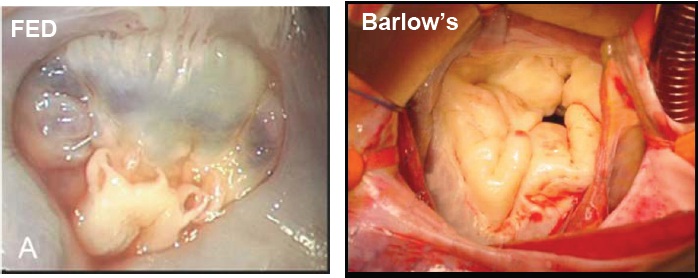|
Design Considerations
As a primary concern for designing annuloplasty rings, the device should obviously repair the valve by holding the annulus at the correct diameter for proper function. There are a number of secondary concerns as well that must be addressed.
Biocompatibility
Any implantable device should be as biocompatible as possible, and annuloplasty rings are no exception. Despite having a much lower immune response compared to valve replacements, risks due to blood coagulation and thromboembolic events are still present. Any increase in biocompatibility is highly valuable to reduce complications.
Applicability
Valvular disease is a broad field with a large number of etiologies. Currently, some annuloplasty rings treat certain etiologies better than others, requiring hospitals to purchase stocks of multiple different types of rings from different companies. Studies of degenerative valvular diseases have shown two major pathological entities that should be separated: 1) fibroelastic deficiency (FED) with thin leaflets, prolapse of a single segment, short evolution, a normal D-shaped annulus, and less complex repair, and 2) Barlow's disease with billowing leaflets, multi-segmental prolapse, excess tissue, long-lasting evolution, a circular annulus, and complex repair. Attempts to restore the normal D-shape in Barlow's disease have led to suboptimal shape, since an abnormally shaped annulus in a Barlow's affected valve can function without leaking for several decades. Design of a single ring to treat all of these diseases can gain a competitive advantage in the market.

Surgeons are increasingly using minimally invasive techniques to reduce healing times and risk of complications. Rings that can be used in minimally invasive valve repairs as well as normal valve repairs would gain a further advantage over niche valves.
Ease of Use
Despite the fact that patients receive the devices, surgeons are the group with the most buying power for implantable medical devices. Marketing strategies for such devices to surgeons almost always includes ease of use as a key component. Ease-of-use advances take into account simplicity, operation duration, ergonomics, intuitiveness, and required precision. A low profile is commonly cited as a desirable trait for rings to allow implant through small incisions where visibility and access may be limited. Determining the patient's annulus size is included in the procedure as well as implanting the ring, so ring design should include sizing as a concern as well.
Cost and Manufacturability
Cost control is important, since although improvements to annuloplasty rings are desired, many surgeons are currently satisfied with the options currently on the market, so a large price difference will be met with resistance unless there is a strong reason to buy the newer ring. Consequently, manufacturability is an essential part of the design to ensure high yield to reduce costs.
Durability
Usually, durability is a greater concern in medical devices, especially ones that are under constant forces such as those in the heart, but durability is usually not a significant issue, as valvular repair procedures exhibity approximately 95-97% freedom from re-operation after 20 years. Improvements in this area are welcome, but as long as durability is not lost in new designs, surgeons and patients prefer improvements in the other areas more than in durability.
|
